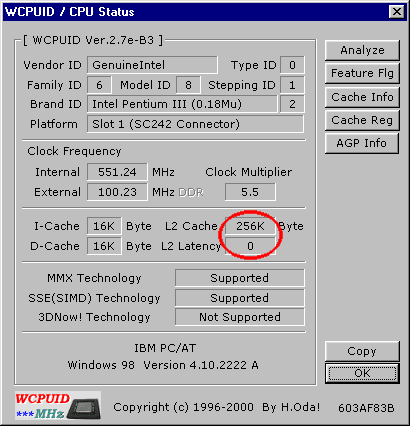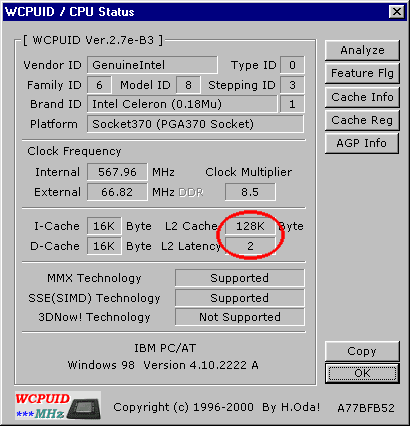
Much more than 1/2 the Cache
When we originally got wind of the forthcoming Coppermine128 core we immediately expected them to perform virtually identically to their Coppermine counterparts since the removal of 128KB of L2 cache realistically shouldn’t result in a huge performance decrease in your everyday applications and games.
Unfortunately, shortly after the release of the new Celeron based on the Coppermine128 core (including the benchmarks that revealed that this new Celeron wasn’t the low-cost savior we had been waiting for), there was quite a bit of speculation as to why the Celeron wasn’t performing identically to a Pentium III Coppermine at the same frequency.
In our initial Celeron 600 review, we published some benchmarks that illustrated the negative effects of the 66MHz FSB on the Celeron processor, which helped to explain some of the performance discrepancies because after all, we hadn’t investigated the effects of the FSB on the Pentium III platform since the days of the original Celeron 300A to 450 overclock.
Our benchmarks proved that anywhere from 4% - 13% of the performance difference between a Celeron 600 (66MHz FSB/memory bus) and a Pentium III 600E (100MHz FSB/memory bus) was due to the 66MHz memory bus alone.
By disabling the L2 cache on both a Pentium III 600E and on a Celeron 600, we were able to determine the percentage of the performance difference attributed to the 66MHz memory bus and the remaining percentage we attributed to the 66MHz FSB frequency.
What we didn’t account for was a difference in the L2 cache of the Celeron that would cause the performance of the Celeron to be lower than an equivalently clocked Pentium III.
For starters, something must be made very clear about the Coppermine128. When Intel produces a Coppermine128-based Celeron, they don’t simply take a regular Coppermine Pentium III and disable half of the cache, and the Coppermine128 isn’t made up from the Coppermine Pentium III rejects. This we have confirmed from reliable sources inside Intel, and we’ve known this ever since the release of the Celeron.
With the aid of a program from H.Oda, we were able to confirm quite a few points of speculation about the Celeron and its relationship to its bigger brother, the regular Coppermine.
Below we have the output of H.Oda’s WCPUID program when run on a Pentium III 550E based on the Coppermine core.

And now we have the output of the same program when run on the same system, but this time we replaced the Pentium III 550E with a Celeron 566.

Notice anything different? The Celeron features an L2 cache latency value of 2 whereas the Pentium III features an L2 cache latency value of 0. While this could account for some of the performance difference, there is also another pretty major discrepancy between the two outputs.
Update (4/21/00): It turns out that WCPUID is in fact misreporting cache latency. According to Intel, the Coppermine128 Celeron and Coppermine Pentium III's both have the same cache latency. So much for the latency part of the theory. But there's more to cache than just latency and clock speed...










0 Comments
View All Comments